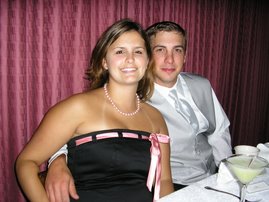
By: Jean Fritz
Illustrated by: Dyanne DiSalvo-Ryan
I love reading biographies. I like the the fact it's nonfiction, about a real person. It's been a long time since I've read a biography, especially a kid's one.
I had never heard of this book before and I flipped through it first to see if it was someone I'd be interested in learning about. I was enthralled by this woman, Elizabeth Cady Stanton. Many people know that Susan B. Anthony was the pioneer for the fight of women's suffrage in the late 1800's and early 1900's. But, there was someone else who worked very closely with Anthony in this fight-Elizabeth Cady Stanton. I had never heard of this woman before and I found the first few pages of this biography very interesting. As I continued to read, I learned about this woman and all the things she did to fight for equality. She is truly a remarkable person.
I would highly recommend this book to ALL women to read. It is amazing at what Stanton and Anthony had to go up against and the harassment they endured in fighting for women to be treated as an equal. Girl power is definitely an understatement! I vote in all elections and have been proud to do so since I was 18. I vote from the presidential elections to the city council. I not only feel like it's my right, I feel like it's my as an informed member of society. The next time I vote in an election, the plight of Stanton and all that she did to help women like me be treated as an equal will be in the back of my mind as I happily drop my ballot on the box!














